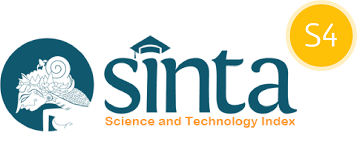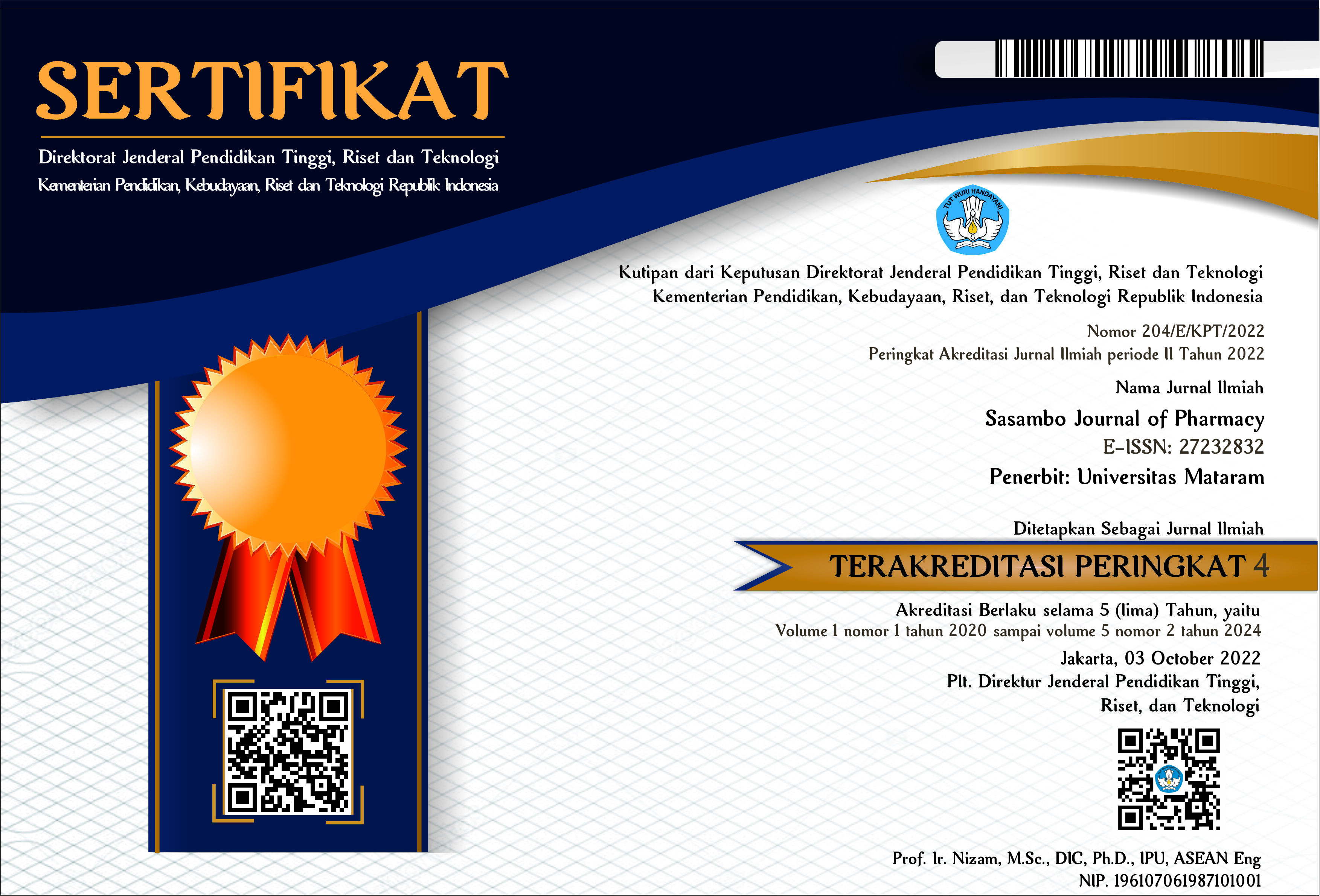Pola Penggunaan Obat Antihipertensi Pada Pasten Geriatri Rawat Jalan di Rumah Sakit TK. II Pelamonia Makassar Pada Bulan Januari-Maret talun 2019
DOI:
10.29303/sjp.v1i1.20Downloads
Abstract
Hypertension in the elderly can increase the workload of the heart and arteries which, if continued, can cause damage to the heart and blood vessels. So that requires routine medication adherence to reduce blood pressure. While the elderly with hypertension must take medication regularly because adherence and a good understanding in carrying out therapy can affect blood pressure and prevent complications. This study aims to determine the pattern of the use of hypertension drugs in outpatient geriatric patients in kindergarten hospitals. II Pelamonia Makassar in January-March 2019. This type of research is a non-experimental quantitative study using descriptive design. Descriptive research that aims to make a systematic, factual, and accurate description of the facts and the nature of a particular population or area. This study obtained 23 medical records of geriatric patients who met the inclusion criteria. The inclusion criteria in this study were geriatric patients diagnosed with hypertension with age usia 60 years and receiving hypertension treatment. The results showed that the most commonly used classes of hypertension were amlodipine by 23%, single candesartan by 17%, and micardis by a single 13%, and the most used drug combination therapy was a combination of amlodipine and candesartan by 17%, amlodipine and valsartan by 13%), while candesartan and bisoprolol by 17%.Keywords:
Geriatrics, Hospital. II Pelamonia, Hypertension, Usage medication drugReferences
Sartik, Tjekyan RM andZulkarnain, (2017) ‘Faktor resiko dan angka kejadian hipertensi pada penduduk palembang, Jurnal kesehatan masyarakat, Dinas Kesehatan Kota Palembang.
Farida, umul and Cahyani, P. W. (2018) ‘Pola Penggunaan Obat Antihipertensi Pada Pasien Hipertensi Rawat Inap Di Rsud Mardi Waluyo Blitar Bulan Juli-Desember Tahun 2016’, Jurnal Wiyata Penelitian Sains dan Kesehatan, 5(1), pp. 29–33. Available at:http://www.ojs.iik.ac.id/index.php/wiyata/article/view/197.
Handono, S. and Selvia, D. R. (2013) ‘Upaya Menurunkan Keluhan Nyeri Sendi Lutut pada Lansia di Posyandu Lansia Sejahtera’, Jurnal STIKES, 6(1), pp. 63–73.
Tarigan, A. R., Lubis, Z. and Syarifah, S. (2018) ‘Pengaruh Pengetahuan, Sikap Dan Dukungan Keluarga Terhadap Diet Hipertensi Di Desa Hulu Kecamatan Pancur Batu Tahun 2016’, Jurnal Kesehatan, 11(1), pp. 9–17. doi: 10.24252/kesehatan.v11i1.5107.
Usia, S. L. (2016) ‘Situasi lanjut usia (lansia)’, Situasi Lanjut usia (Lansia) di Indonesia, p. 1. Available at: http://www.depkes.go.id/resources/download/pusdatin/infodatin/infodatin lansia 2016.pdf.
Rahmawati, R. (2018). Evaluasi Tingkat Kepuasan Pasien Terhadap Pelayanan Kefarmasian Di Depo Igd Rumah Sakit Tk Ii Pelamonia Makassar. Media Farmasi, 14(2),78-84. https://doi.org/10.32382/mf.v14i2.599.
Fajar, D. R., Sari, I. W., & Syam, A. (2018). Tingkat Kepuasan Pasien Terhadap Pelayanan Kefarmasian Di Puskesmas Tarowang Kabupaten Jeneponto. Jurnal Penelitian Kesehatan Pelamonia Indonesia, 1(1), 4-4.
License
Authors who publish with Sasambo Journal of Pharmacy (SJP), agree to the following terms:
- Authors retain copyright and grant the journal right of first publication with the work simultaneously licensed under a Lisensi Creative Commons Atribusi 4.0 Internasional. This license allows authors to use all articles, data sets, graphics and appendices in data mining applications, search engines, web sites, blogs, and other platforms by providing an appropriate reference. The journal allows the author(s) to hold the copyright without restrictions and will retain publishing rights without restrictions.
- Authors are able to enter into separate, additional contractual arrangements for the non-exclusive distribution of the journal's published version of the work (e.g., post it to an institutional repository or publish it in a book), with an acknowledgment of its initial publication in Sasambo Journal of Pharmacy
- Authors are permitted and encouraged to post their work online (e.g., in institutional repositories or on their website) prior to and during the submission process, as it can lead to productive exchanges, as well as earlier and greater citation of published work (See The Effect of Open Access).







